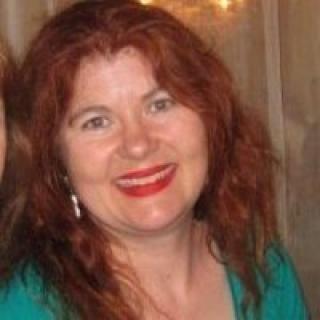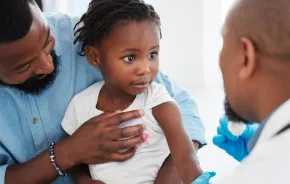Drive through most Puget Sound neighborhoods today, and you are less likely to see kids riding bikes, climbing trees or playing chase than you did when their parents were young. Today's generation of children is often found inside, watching TV or playing video games. And while parents may feel safer having their children inside, the lack of exercise and general fitness is putting this generation of children at great risk.
"Both obesity and type 2 diabetes have risen dramatically in incidence in young children over the past decade, and it is likely that this is in part due to their lifestyle," says Dr. Vincent Poitout, D.V.M and Ph.D., who is studying the link between obesity and diabetes through the Pacific Northwest Research Institute.
Using school fitness classes and innovative after-school programs to combat children's increasingly sedentary habits is the passion of Seattle Pacific University's Bud Turner. Turner is an instructor at SPU, the author of educational texts for physical education classes and lead organizer of The West's Best Physical Education Workshop, an annual event that draws more than 700 fitness educators from across the United States.
Turner says that while most local school districts meet Washington State's guidelines of 90 minutes minimum of P.E. a week for elementary-age children, parents should take note of trends in other states, including California. In Los Angeles, where Turner gives workshops, "it is really bad -- kids there have hardly any time in elementary P.E.," he says
According to Turner, while many adults don't recall their own days in gym class fondly, their children are likely to have a more positive view of physical education. "Today, the better programs are using the A.C.T.I.V.E. acronym to choreograph their lessons in a way that results in what we are calling success-oriented physical education," he says.
A.C.T.I.V.E. stands for:
- A -- All Students Active. "Historically, physical education has not done a good job at properly activating its customers," Turner notes. "Skills do not improve while standing in a long line with one ball."
- C -- Creativity. Recognizes the importance of being creative in choosing equipment or formulating a game that "generates excitement and higher-level thinking skills," Turner says.
- T -- Teaching Lifetime Fitness, which acknowledges that "concepts incorporating health-related fitness, nutrition and lifestyle behaviors are integral to the growth and development of all students regardless of age."
- I -- Integration. "Academic concepts in movement lessons can increase student understanding and build a stronger bond between the classroom teacher and physical educator," Turner says.
- V -- Victimless Delivery Systems. "The old days of being picked last, one ball for every 30 students and only 50 percent of a class experiencing success is not in the best interest of our students or our professional image."
- E -- Equitable Experiences for All. "Having high expectations for all students regardless of gender, age, size, current level of ability, or interest is key to establishing a true success-oriented physical education program."
Turner says that parents should watch for indications that their child needs help combating an unhealthy lifestyle while there is still time to make changes. Warning signs include too much television and/or video games, a high-fat diet and lack of interest in physical activity.
"The most important resource is the parent," he notes, and parents "must model, whether they like it or not, daily exercise patterns. Exercising together as a family is just as important as a healthy diet, and doing homework and chores."
Making exercise fun is the goal for Michael Soule, the summer camp director for Bright Water School, a Seattle Waldorf school for preschool through 8th grade. Soule is a trained movement and Waldorf teacher who has taught P.E. for almost a decade. This summer, for the second year, he is teaching a Circus Arts Camp at Bright Water. Children in second through sixth grade will learn a number of unusual skills, including juggling, clowning, riding a unicycle and tumbling, and will put on a circus performance at the end of camp.
In circus camp, Soule says, children have fun while developing a sense of balance and enhanced eye-hand coordination, and "are able to progress at their own speed in a variety of activities with encouragement from others."
Soule's advice for parents who want their children to develop athletically? Don't limit a child too quickly to one sport. "I believe that children who participate in a lot of different sports will be better athletes as teens," he says.
In addition to creating a healthier body, movement also creates greater minds, Soule says, noting that brain research "shows that neural development is very much connected to movement in young children." As a father of three boys, Soule observes that young children need touch and movement. He encourages parents to "get down on the floor and wrestle with young children and form playgroups where children can enjoy being active in a group without too many rules."
As children grow older, he says, play sports like soccer and Frisbee with them. "Children will grow to love the sports their parents love," Soule adds.
Kathleen F. Miller is a Sammamish-based freelance writer and mother of two.
Resources
Beyond better gym classes, Bud Turner says there is a wealth of resources available to parents who want to help their children become more active. "There are so many physical outlets available for children to involve themselves in an active lifestyle," he says. "The parks and recreation departments sponsor after-school programs with little or no fees; Boys and Girls clubs, YMCA/YWCAs also have programming in this area."
Local fitness resources:
- YMCA - ymca.com
- Boys and Girls Clubs - bgca.org
- Circus Camps at Bright Water School - brightwaterschool.org, 206-624-6176
- School of Acrobatics and New Circus Arts - astort.com/sanca
Gym and movement programs:
- Gymboree (various locations) playandmusic.com/b2c/customer/home.jsp
- My Gym (Crossroads/Bellevue) my-gym.com, 425-451-1393
- Kindermusik (various locations) kindermusik.com











